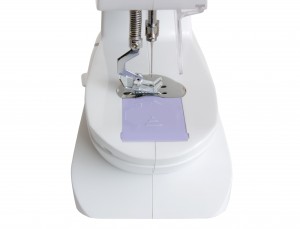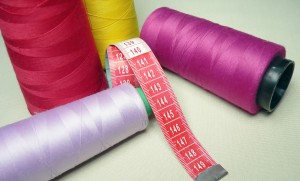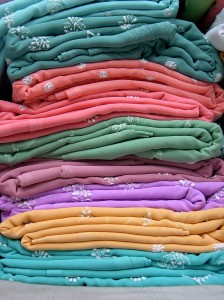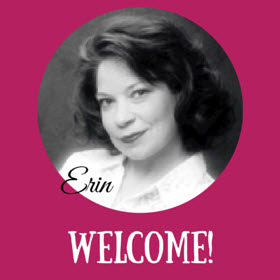Extra effort goes into our sewing machine reviews so that you don’t have to hop from site to site looking for information.
Buying online is convenient. You save time and can usually find a great deal but it’s hard to be 100% confident you’ve made the best selection when you buy without physically touching and testing the product you are about to lay out hard earned cash to acquire.
How do we write our reviews? We read….and read….and read. For every sewing machine we compare, we read every review from other actual users of the machine that we can find online – anywhere. Ratings and comments about ease of use, known problems, cool features and neat tips are consolidated into a summary highlighting the most important points about each machine along with the pros and cons.
All reviews get summarized into our comparison chart here:
Compare Sewing Machines
Each sewing machine’s instruction manual is found and read in its entirety (okay – sometimes I skip the hazard warnings only because they’re fairly generic – don’t immerse your sewing machine in water!)
Some of these sewing machines have more than 300 consumer reviews and ratings. I won’t go into explaining just how much time it takes to read that number of reviews (I drink a lot of coffee) but I know that’s what I would do if I were about to buy my first sewing machine. That’s not always possible for you to do yourself when life is filled with plenty of other priorities. As a mom, I fully understand how limited one’s time can be!
Several factors stand out as being important in choosing sewing machines for beginners that don’t always get well covered in an online description:
Built-in Stitches
Sure, you might get a tiny shot of the sewing machine’s reference chart showing you pictures of the built in stitches but to a beginner, that might not mean a lot. They’re pretty – what do they do? And what is the difference between built-in stitches and stitch functions?
Built-in stitches are the pre-programmed needle patterns the sewing machine can perform out of the box. There are several kinds of stitches used in sewing:
- Utility – joins pieces of fabric together when it doesn’t have to be pretty. Straight stitches, zigzag stitches, and hemming stitches are used to do basic sewing tasks like mending and joining.
- Stretch – special stitch patterns that work on stretchy fabrics like knits and jersey.
- Decorative – can be used for joining pieces of fabric together or for adding embellishment to fabrics and projects. These stitches are critical when your stitch work is going to show AND you want it to be pretty or to stand out on its own.
- Overlocking – Sergers are popular machines that professionally finish the edge of seams by trimming the edges and surrounding them with overlocking stitches. Some regular sewing machines for beginners have overcasting stitches that wrap around the edges of seams, as well.
- Quilting – Some decorative stitches can be used in quilting but there are also some quilting-specific stitches available on sewing machines that replicate the look of hand-done quilting.
- Embroidery – Sewing machine embroidery can be done free hand or with embroidery hoops and sewing machines sometimes have embroidery accessories that enhance their functionality and make them more flexible for handling embroidery projects.
Stitches can be classified in other categories than represented here, but the purposes are similar.
“Stitch functions”, on the other hand, are variations of a machine’s built-in stitches that can be performed using the sewing machine. Often, you”ll see a machine advertised as having a certain number of “stitch functions” meaning that the machine allows for modifications to direction or placement of the built-in stitches.
Fine Tuning Sewing Machine Settings
Some sewing machines have established pre-set settings for things like thread tension, stitch width, stitch length, presser foot height, and needle positions and some allow for fine-tuning those settings by way of dials or buttons. For a beginner, pre-set settings are great for when you want to just set-up a machine and start learning. However, the more experienced one becomes, the more one needs the ability to fine-tune certain settings to accomplish more complicated stitch work. For your first machine, decide how far you’ll be taking your hobby and whether simplicity is important for the long-term or whether you need a machine that will grow with you as your projects and talents expand.
Sewing Machine Speed
Where possible, our sewing machine reviews note a sewing machine’s speed measured in stitches per minute. While most machines run somewhere between 700-850 spm, that doesn’t mean that the machine handles all speeds between 0 and the maxium spm the same. Some foot pedals seem to be less sensitive to pressure than others and lurch from 0 to 60 in 2.2 seconds (sorry, car analogy…). This can be frustrating for someone just starting to sew so any time we see issues with a machine’s foot pedal sensitivity, we note the issue.
Computerized
We ooh and ahh at the invention of the computerized sewing machine! Younger generations love push button technology and LCD screens. If only we could text our friends from our sewing machines! A computerized sewing machine uses these screens to show you stitch selection, presser feet requirements, stitch widths, stitch lengths, and machine error codes. It’s a way of showing you a visualization of your sewing machine’s settings vs the tick marks on dials or the LED light indicators on other models.
Automation
Advances have been made in the automation of threading the needle, bobbin winding, bobbin setting, and other settings that were previously done manually. Each of us finds different levels of value in these automatic tools. If you’ve been used to threading a needle yourself and don’t mind doing it, an automatic needle threader is nice to have (if it works well) but may not be worth more to you than having a nice quilting presser foot.
Compare Sewing Machine Reviews
So how do sewing machines for beginners differ from each other? Well, think of each sewing machine as its own secret recipe. When the manufacturer comes up with a new model, they use a pinch more of automation and a dash less of decorative stitches, they throw in more accessories, or they mix in more metal parts for sturdier construction. Maybe they cut back on the metal and go for a light-weight machine. They know that each sewer wants a recipe that suits them best so they offer a wide selection of recipes. The manufacturer blends some combination of the above sewing machine elements to target a consumer demographic that needs that particular blend of goodness.
Using our sewing machine reviews as a guide, you can compare the machines that have a “recipe” best suited for you.
For a quick glance at how our reviews stack up, visit our Compare page.




This is a great website for those returning to sewing as well as beginners. My skills are intermediate/advanced, but I haven’t sewn much other than general repairs in 20 years. I used to sew clothes for my kids and me, knit shirts for my husband, home decor and crafts. I’m interested in returning to sewing more from the craft/quilting perspective than garment making, but the controls on my 35 year old Viking have frozen from lack of use. It will cost about $200 to repair so I’m opting for a new, more up-to-date machine instead. From your reviews, I’ve decided on a Janome. The 8077 seemed to be the one; but with all the buttonhole selections, it seems to be geared more toward garment sewing. Now, I’m trying to decide among the DC 2010, 2011, 2012 or 3050. Based on what I’ve described, what are your thoughts on what choice I should make? Do any of these have equivalents such as the Magnolia 7330~8077?
Pam – As I own the Janome Magnolia 7330 the one thing I constantly wish for is more decorative stitches so your concern about the buttonhole count makes complete sense.
As for the DC series and the 3050 compared to the 7330/8077, you get all the same stitches minus a couple of buttonholes PLUS some additional utility and decorative stitches.
The controls and 7 point feed dogs are the same in ALL six of these machines with two exceptions. The 3050 does not have the Start/Stop button while the others do but it does have four direct stitch select buttons and none of the others have that. The direct stitch selection buttons let you choose one of four, most used (and pre-set) utility stitches without having to scroll through the full set of stitches. A small time saver but I’d personally rather have the Start/Stop button.
The stitch patterns on the DC2010, 2011, 2012, and 3050 are identical and all have a more powerful, DC motor which the 7330/8077 do not.
The only other difference has to do with the included accessories. The DC2010 comes with 6 presser feet, the DC2011 with 7, and the DC2012 with 5. These usually come with a hard cover case, too. The 3050 only comes with 4 presser feet and no case.
This makes the DC2010/2011/2012 the better value package in most cases, completely comparable to the 7330/8077 and with a more powerful motor.
The DC2010 and DC2011 are retired and I see the 2010 isn’t even on Amazon anymore. Prices are the same for the other two here: 2011 and 2012. They come with the same accessories on Amazon so then it’s just a matter of color preference between the two – pink or green trim – unless you can find either of them at a discount at your local store.
Hope that helps!
Sincerely,
Erin